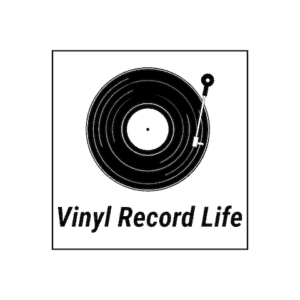If you’ve started building up a record collection, however fledgling it may be, you may be wondering about the best way to store it.
Vinyl record storage is an important subject. Records are easily damaged, and a lot of the ways in which they can get damaged are easily avoidable.
Vinyl records must be stored vertically to ensure they are preserved in the best possible condition. Storing records upright helps avoid them becoming warped, scratched and even broken. Records also need to be stored away from direct sunlight, kept dry and not experience fluctuations in temperature.
The covers you place your records inside are just as important as where they’re stored, as is the way they’re handled when they’re being put away.
In short, storing vinyl records is a process that has a few steps, all of which require a level of attention and care to ensure that the records not only remain undamaged, but are kept in ideal condition to preserve their sound quality.
This article covers the most important things you need to know about storing vinyl records…
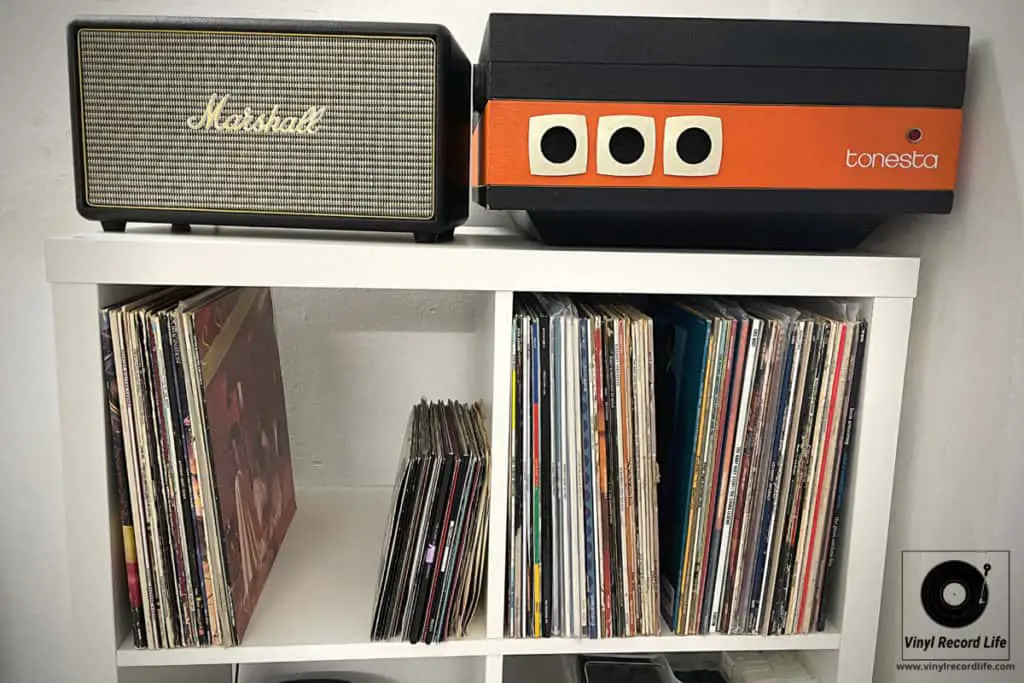
Always Clean Your Records Before You Store Them Away
The protection of your records starts before you even store them. Giving a record a quick but careful clean before placing it in its cover helps to remove any dirt, dust or debris that it may have picked up.
Because records create static, they can easily attract a lot of dirt particles that float about in the air. If this dirt is not removed from the record before it’s stored away, it can become embedded in the record’s grooves.
Not only will this negatively impact on the sound quality of the record over time, but this debris can also cause damage as it gets more and more impacted into the vinyl over the course of time.
A swift clean with an anti-static brush before returning a record to its sleeve will help remove the bulk of anything that’s made its way onto the record’s surface.
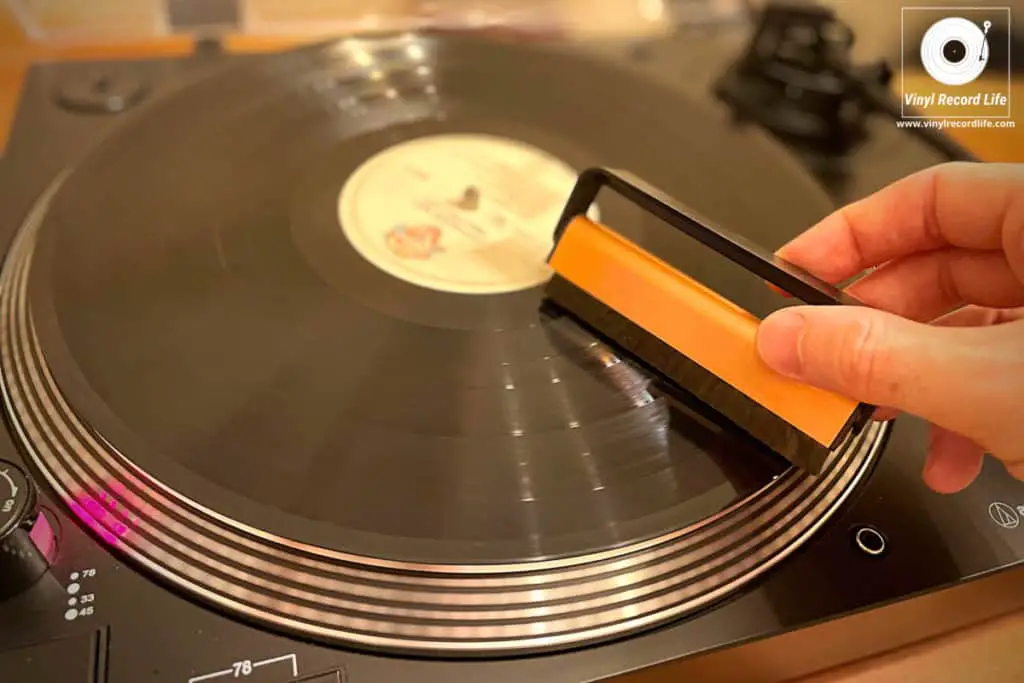
If you’re planning on storing your records for a long period of time, a deep clean is recommendable. Check out our guide to cleaning records for more info on the best way to go about this.
Make Sure You’re Handling Your Records Like a Pro
The way you handle your records plays an important role in storing them correctly.
As outlined above, cleaning them is essential to keeping them in great condition, and the way you hold them is just as significant. Handling records in the wrong way gets them dirty, which in turn can lead to their deterioration.
There are a couple of simple things to remember: never touch the record’s playing surface, and always hold the record by its outside edges.
We go into detail on the best practices for handling vinyl records in our specific guide, which is accompanied by step-by-step images to help show you the best way to go about this.
Make The Small Investment in Inner Sleeves – It’s Worth It
Few things are more important than what your record will be in direct contact with while it sits around for days, weeks or even months waiting to be played. This is where quality inner sleeves come into play.
The first thing I do whenever I buy a record, be it brand new or second hand, is clean it and then place it in a fresh, brand new anti-static inner sleeve made from anti-scratch plastic.
These inner sleeves are my choice (link opens in Amazon) – there are plenty of others available but I can highly recommend these from a lot of personal use.
The paper inner sleeves that most records come in will degrade over time, leaving deposits on the record that get lodged in the grooves and contributing to its decline. Paper is also really abrasive and will wear away at the record, so those paper inners are to be steered clear of.
Inner sleeves are the first line of protection for your records when they’re stored away, so the importance of getting good quality ones can’t be understated.
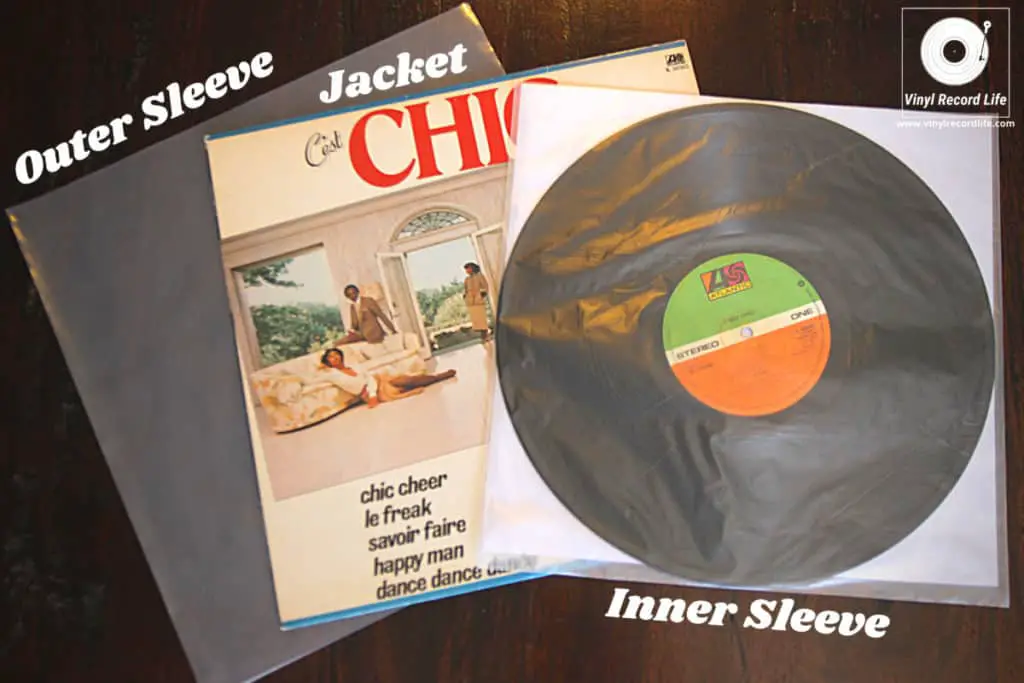
Outer Sleeves Are Just As Important For Preserving Your Vinyl Records
Not only do plastic outer sleeves help to keep the jacket cover of records in good shape for much longer, they also provide another layer of defense against dust and light.
How many cardboard record jackets have you seen frayed, split and falling apart at the seams when sifting through second-hand records at a store, or even in your own collection?
An unprotected jacket will feel the strain after a certain amount of time, and an outer sleeve will help keep it fresher for longer. They also help make it much easier to slide records out from a shelf, reducing friction between record covers.
The material they’re made from is just as important as having an outer sleeve in the first place. Many older outer sleeves, and a lot of ones still produced today, contain PVC, and this can contribute to the deterioration of records over time.
Polyethylene plastic is a much more record-friendly material and I use these outer sleeves (link opens in Amazon), again because they’re great value and decent quality.
Vinyl Records Need to be Stored Vertically
When it comes to placing your records wherever they’re going to live, there is one major rule that needs to be adhered to: vinyl records must always be stored upright. It’s never OK to store records flat.
There are a few main reasons why storing vinyl records vertically is so important, principal among them being to avoid warping. Records that are stored at a slant, however slight, will deform over time, while records piled one on top of another face more than just this threat.
Stacking records causes myriad issues. Any dirt, dust, grime or other debris that’s managed to cling to the record’s surface will grind into the record, causing scratches, blemishes and general damage.
It’ll also get pressed further into the record’s grooves, so as well as potentially damaging the disc the sound will also get affected. And that’s before the damage this embedded groove dirt can do to your turntable stylus.
Another tip to keep in mind when storing your records is to store records of similar sizes together, so 12 inch records shouldn’t be mixed with 7 inch records. This will help to avoid warping and other damage if the records do lean ever so slightly at any point. Avoiding packing too many records into one space together is also a key point for consideration.
Minimizing, or even better, eliminating any pressure applied to records when they’re being stored will help keep them safe, in the correct shape and out of harm’s way.
Suitable Storage Methods and Solutions for Your Vinyl Record Collection
Vinyl records need to be well supported, kept upright and given a rigid, snug place to sit when they are being stored.
For this reason, the best solution for storing records is a secure shelving solution which ideally has compartments.
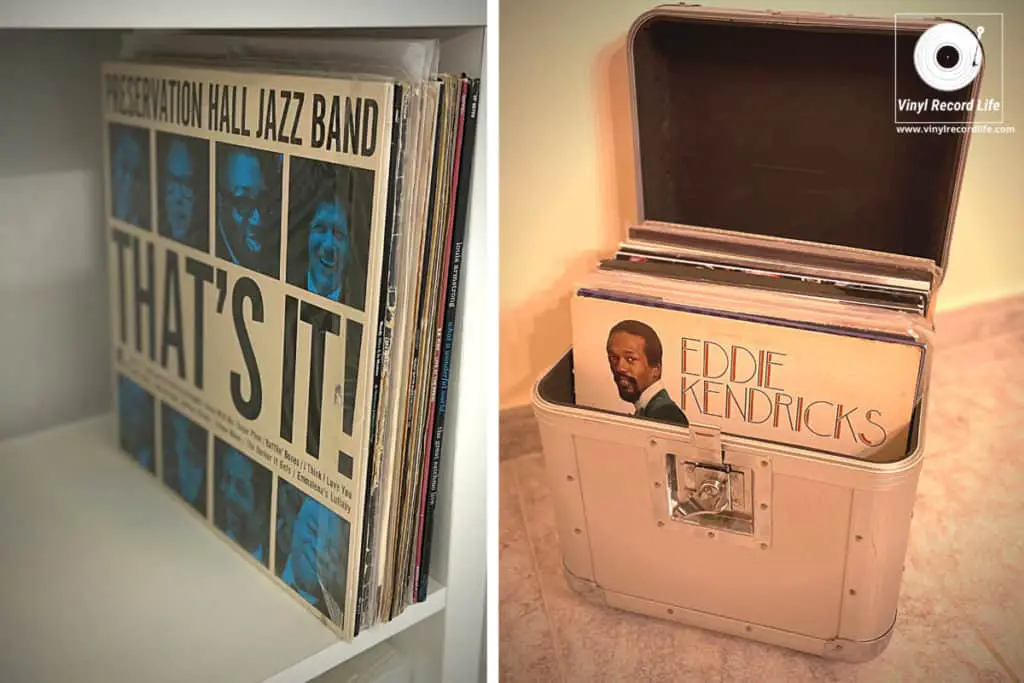
The Ikea Kallax shelving unit has become synonymous with vinyl record storage as a cheap, sturdy and effective solution, and its blueprint provides the ideal outline for how records should be stored. I’ve got a pair of 8-cube Kallax and they’re perfect for the job at hand.
There are plenty of cube-style shelving units similar to the Kallax, as well as customizable options, available to buy for your records.
Record dividers can also be used on shelving units, which enable you to provide extra support and protection for records, as long as the dividers are rigid, strong and provide support coverage for the entire dimensions of the record. They’re also a great way or organizing your records, of course.
The other storage solution which I personally vouch for is a flight case, although this perhaps isn’t as practical as a shelving unit when it comes to space in the home. They look great though, and they fulfil the main criteria for protecting records. I’ve got a pair of Citronic CV50 cases, but these appear to have been discontinued as they’re really hard to find now, but this model is very similar (link opens in Amazon).
Decorative storage solutions can be just fine too, and for those who don’t have a large record collection these can be the way forward as a full shelving unit may not be necessary. We’ve looked at 11 great display options for records in this post.
Ensuring the Ambient Atmosphere is Not Detrimental to Your Records
There are plenty of environmental aspects that can pose a risk to your records, so these all need to be addressed when you’re deciding where and how to store your records.
Direct Sunlight and UV damage
Keeping records out of direct sunlight is essential. UV from direct sunlight will damage records, and if they’re in direct sunlight for any sustained period of time they’ll be subject to heat too. This can lead to warping, among other problems.
Extreme Heat/Cold and Temperature Fluctuations
Information on the right temperature at which to store vinyl records varies depending on where you source it, but in general there is a consensus that an ambient temperature of between 65ºF (18ºC) and 70ºF (21ºC) is best. A stable room temperature will usually be more than safe enough.
It’s easy to get hung up on things like temperature for storing records, so common sense is often your best friend here. Avoid storing records next to heaters or radiators, and keep them away from windows where they may be susceptible to direct sunlight.
Avoid Humidity and Dampness When Storing Records
Similar to temperature, humidity levels should be kept as stable as possible, with a level of between 40% to 50% relative humidity being about right for storing vinyl records.
As long as your records are kept in a dry place, where damp can’t creep in, they’ll be fine. Mold is one of the enemies of vinyl records, and I’ve seen more than a few fall victim to it when sifting through second-hand records at flea markets!
